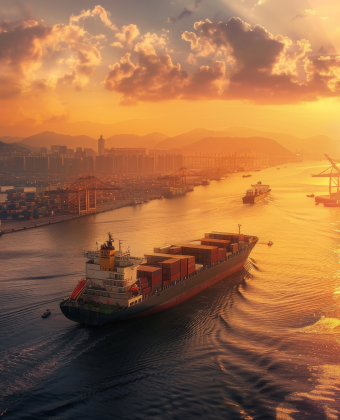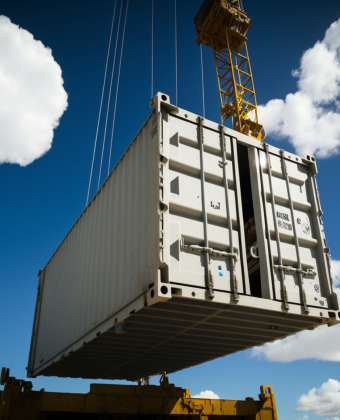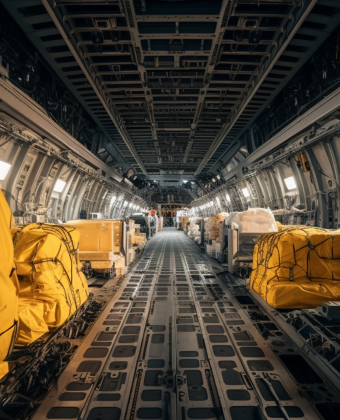In 2025, as worldwide supply chains adapt to disruption, innovation and changing customer expectations, door-to-door multimodal logistics has become a core strategy not only for Indian exporters but increasingly also for Indian importers. Confronted with geopolitical challenges, climatic unpredictability, infrastructure bottlenecks, and changing patterns of global trade, businesses of all industries are looking for logistics models that ensure resilience, efficiency, and end-to-end visibility.
This logistics system is assisting India in revising its global trade standing by providing a flexible, tech-supported, and future-ready system.
What Is Door-to-Door Multimodal Logistics
Door-to-door multimodal transport is defined as the simultaneous application of two or more transport modes – sea, air, road, rail, or inland waterways to deliver goods from place of origin to place of delivery under one contract and operator. Whether it’s transporting auto spares from Delhi to Detroit or importing electronics from Shenzhen to Surat, the whole value chain is integrated through a unified system.
This model reduces trans-shipment delays, suppresses cost spikes, and enhances cargo visibility without sacrificing rapid mode-switching capabilities in the event of bottlenecks or disruptions.
Why It Matters in 2025
1. Climate Disruptions Are Rising
Based on the Indian Meteorological Logistics Council (IMLC, 2024), India has experienced a 20% rise in climate-related cargo disruptions in the last year as a result of extreme climate-related events such as heatwaves, flash floods, and cyclones. Perishable importers and time-sensitive exporters of products such as pharma or vehicle spares cannot sustain such disruptions.
Multimodal routing enables stakeholders to divert cargo in real time, utilizing railways if roads are clogged or inland waterways if ports are jammed.
2. Bottlenecks in Infrastructure Are Aggravating
The Transport Research India (TRI, 2025) study found that freight congestion in India’s urban corridors increased by 35% during peak seasons, owing to clogged highways and old railway infrastructure. Port congestions have also led to higher turnaround times for both incoming and outgoing shipments.
Through the combination of modes, multimodal logistics lessens the load pressure on any one infrastructure channel, providing quicker and smoother delivery cycles.
3. Geopolitical Tensions Affect Trade Flows
The World Supply Chain Report (WSCR, 2024) also discovered that 60% of Indian exporters had been subject to cross-border delays because of sudden policy changes or the increase in tariffs in Asia-Pacific economies. Importers, especially in the chemicals and tech sectors, have suffered in sourcing due to friction between trade blocs.
Multimodal arrangements enable both importers and exporters to switch routes or find alternative sources rapidly as necessary in the current volatile global trading environment
Advantages for Indian Exporters & Importers
Risk Diversification Across Modes
In case one mode does not work, another compensates. A report by A Logistics Insider (2025) mentioned that businesses utilizing 3+ modes of transport experienced 28% less delay compared to those depending only on one mode.
Quicker Customs & Clearance
Streamlined customs documentation and pre-clearing procedures, enabled by integrated service providers, result in less turnaround time at ports and dry docks that are important for importers who engage in inventory-sensitive cycles.
End-to-End Visibility & Tracking
With IoT-based sensors, GPS, and integrated dashboards, importers and exporters now have complete visibility across transport modes. This aids in proactive problem-solving and fosters customer confidence.
Government Push & Infrastructure Alignment
India’s PM Gati Shakti Master Plan looks to reduce the cost of logistics from 13% to 8% of GDP by 2030. The plan facilitates inter-modal connectivity, the establishment of multimodal logistics parks (MMLPs), and effortless data transfer among ministries and private industry.
Industries Maximally Benefitting
•FMCG – Cross-docking and regional logistics clusters ensure multimodal wins.
•Automotive – Part-level coordination state-to-state and country-to-country.
•Pharma – Time-critical shipments with temperature control.
•Electronics – Lesser exposure to long-haul delay.
•Retail – Quicker replenishment through inland multimodal connections.
Final Thoughts – Revitalizing India’s Logistics Advantage
With evolving global trade flows, Indian exporters and importers need to spend on agility, not capacity. Door-to-door multimodal logistics provides the responsiveness to outmaneuver disruption, the pace to achieve aggressive timelines, and the transparency to keep stakeholders posted.
2025 isn’t about coping with chaos it’s about prospering with better logistics. The future is for those companies who can convert complexity into a chance. With a proper multimodal strategy, Indian importers and exporters can become globally competitive, locally efficient, and technology empowered.


